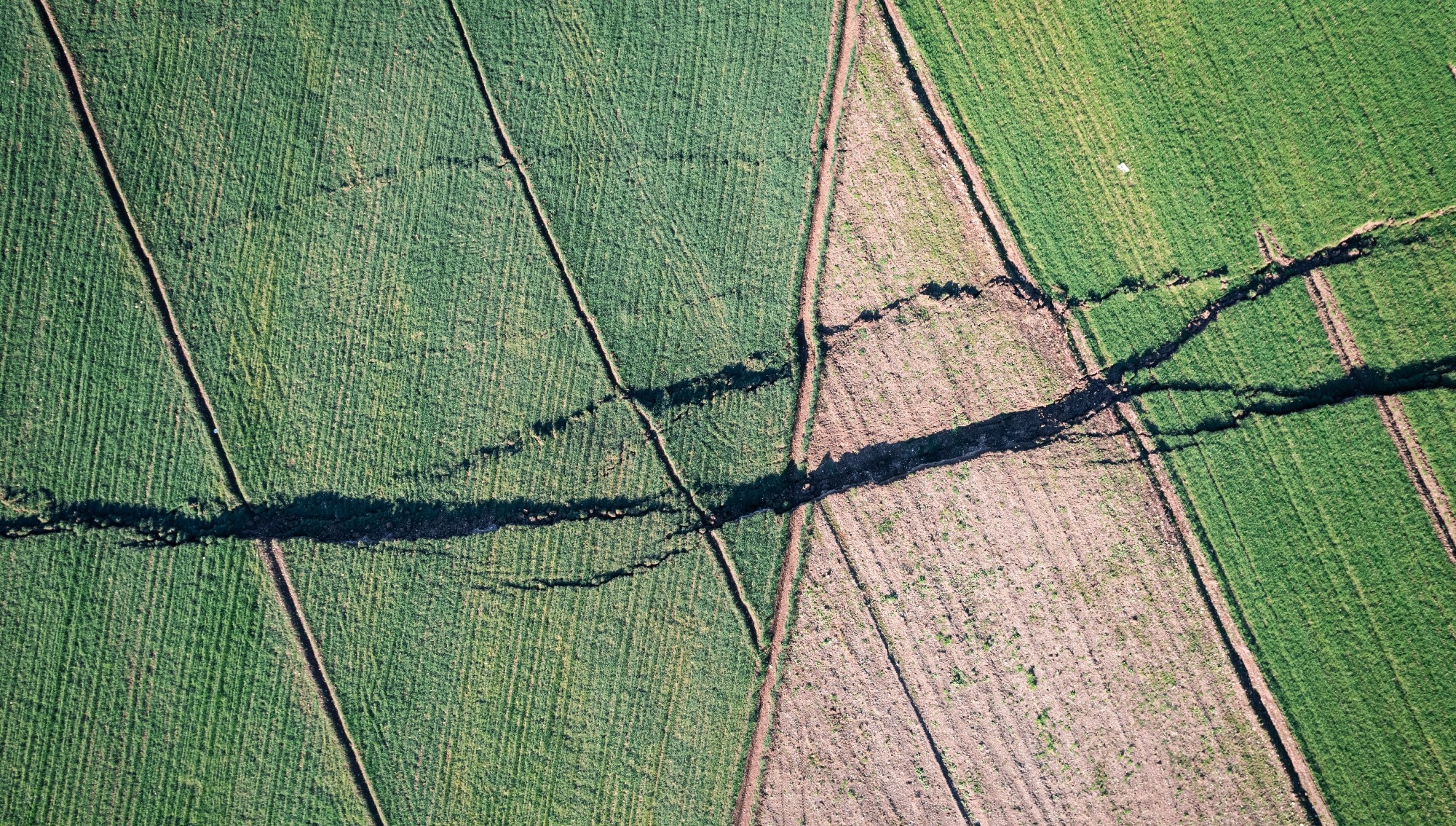An article published in the journal Scientific Reports introduces a novel physics-informed deep neural network approach called ML-SEISMIC to estimate the stress field in the Australian continent. The method autonomously aligns limited stress orientation data with an elastic model without needing explicit boundary conditions.
 Study: Physics-Informed Neural Network: Unraveling Australian Tectonic Stresses. Image credit: boyoz/Shutterstock.
Study: Physics-Informed Neural Network: Unraveling Australian Tectonic Stresses. Image credit: boyoz/Shutterstock.
The orientation and magnitude of tectonic stresses in the Earth's crust play a vital role in numerous geological applications, including carbon or hydrogen underground storage, nuclear waste disposal, reservoir engineering for fossil fuel or geothermal energy production, tunnel or mine stability assessments, probabilistic fault reactivation analyses, earthquake modeling, and borehole drilling orientation or healthy injectivity planning.
The World Stress Map (WSM) project by the International Lithosphere Program collects and compiles stress orientation indicators from in situ fault plane solutions, wellbore breakouts, drilling-induced tensile fractures, volcanic vent alignments, and other records. The extensive global dataset and online interactive map provide invaluable information, particularly on the maximum horizontal stress orientation estimated through various techniques. The latest compilation for Australia integrates data quality to derive stress provinces and interpolate a continuous map.
However, such an approach only yields a subset of the complete stress state. Full mechanical consistency demands reconciling stress orientations with displacement constraints imposed by plate tectonic motions. Previous geomechanical models for Australia manually fine-tuned material properties and boundary conditions through extensive trial and error to match observations. However, the intensive fitting process limits adaptability to other regions.
In contrast, physics-informed neural networks (PINNs) have recently shown remarkable promise in solving partial differential equations for multi-physics problems. However, applications predominantly assume well-posed settings with appropriate boundary conditions similar to traditional forward simulators. Despite the lack of boundary data, this study proposes an innovative method to retrieve the whole stress and displacement fields from governing laws and sparse measurements.
The Study
The authors devised ML-SEISMIC, a PINN formulation to approximate a 2D plane-strain linear elastic scenario across the Australian continent from limited input information. The loss function imposes physics-based constraints while concurrently fitting to available data.
Specifically, it enforces equilibrium (momentum balance), constitutive behavior (Hooke's law relating stresses and strains), and kinematic compatibility (strains from displacements) at numerous points via automatic differentiation. The model matches satellite-based horizontal velocity directions and reconciles recorded stress orientations despite their uncertainty. Optimizing the network weights and biases provides the complete stress tensors and displacement vectors.
The required inputs are minimal: 16 global positioning system (GPS) displacement measurements across Australia and 30 province-averaged stress orientations. No boundary conditions, material parameters, or force loads need specification. The team could thus rapidly obtain results without any manual tuning based on literature or assumptions. The approach is also readily generalizable to three dimensions across scales from mineral mechanics to tectonic plates.
Key Findings
The PINN model yields a self-consistent interpolation of stresses and displacements fitting the sparse constraints while automatically compensating for any data inconsistencies. By removing opportunities for user error through property choices and boundary stipulations, any mismatches highlight locations where reinterpreting the average stress directions is necessary.
The results showcase how this technique can identify regions needing updated orientations from improved measurements. At the edges, the predicted displacements could serve as boundary conditions for extended models. The computed continent-wide stress tensors may enable advanced fault stability, groundwater flow, or wave propagation simulations.
Interestingly, the optimized effective elastic moduli distribution reveals a stronger central and western Australia lithosphere, corroborating thicker crust and ancient cratonic cores versus younger eastern areas. This agreement with independent geological constraints demonstrates the methodology's potential without human tuning.
Overall, the study proposes an efficient stress estimation paradigm directly coupling physical principles, field data, and machine learning algorithms. Streamlining the interpolation expands opportunities to uncover first-order controls on stresses while spotlighting the limitations of current measurements.
Future Outlook
This pioneering framework portends numerous promising directions for enriched insights into Earth's dynamics. Immediate next steps entail extending the strategy to three dimensions: uncertainty quantification through data assimilation, integrating plasticity and fracturing, and multiscale analysis from nano/micro-mechanics to plate tectonics.
The approach readily allows the assimilation of diverse observations across networks with varied densities and accuracies. For instance, strain tensor data from geodetics, seismic anisotropies, or rock record deformations could supplement direct stress indications. Integrating probability distributions rather than single values for each measure would enable robust uncertainty analyses to guide data collection.
Since stresses often exceed rock strength thresholds and cause permanent failure, accommodating plasticity and discontinuities would enhance realism. Such features pose complex mathematical challenges but provide ripe testing grounds for augmented physic-informed neural networks. Tackling cracks and nonlinearity may uncover surprising patterns revealing controls on continental deformation modes.
Spatially nested models from mineral grains to entire tectonic plates would offer multiscale glimpses into stress evolution mechanisms. Localized influences like topography and clustering could manifest at smaller dimensions, while plate boundary tractions control broader regions. Stress trajectories across scales may highlight scale-invariant properties.
The demonstrated flexibility constitutes a compelling proof-of-concept for ubiquitous adoption across the solid Earth sciences. The approach has immense promise to expose first-order behaviors, including plate motions, fault reactivations, and geohazard probabilities, by reconciling multifaceted signals. Production-scale simulations can empower global views into Earth's stress field.